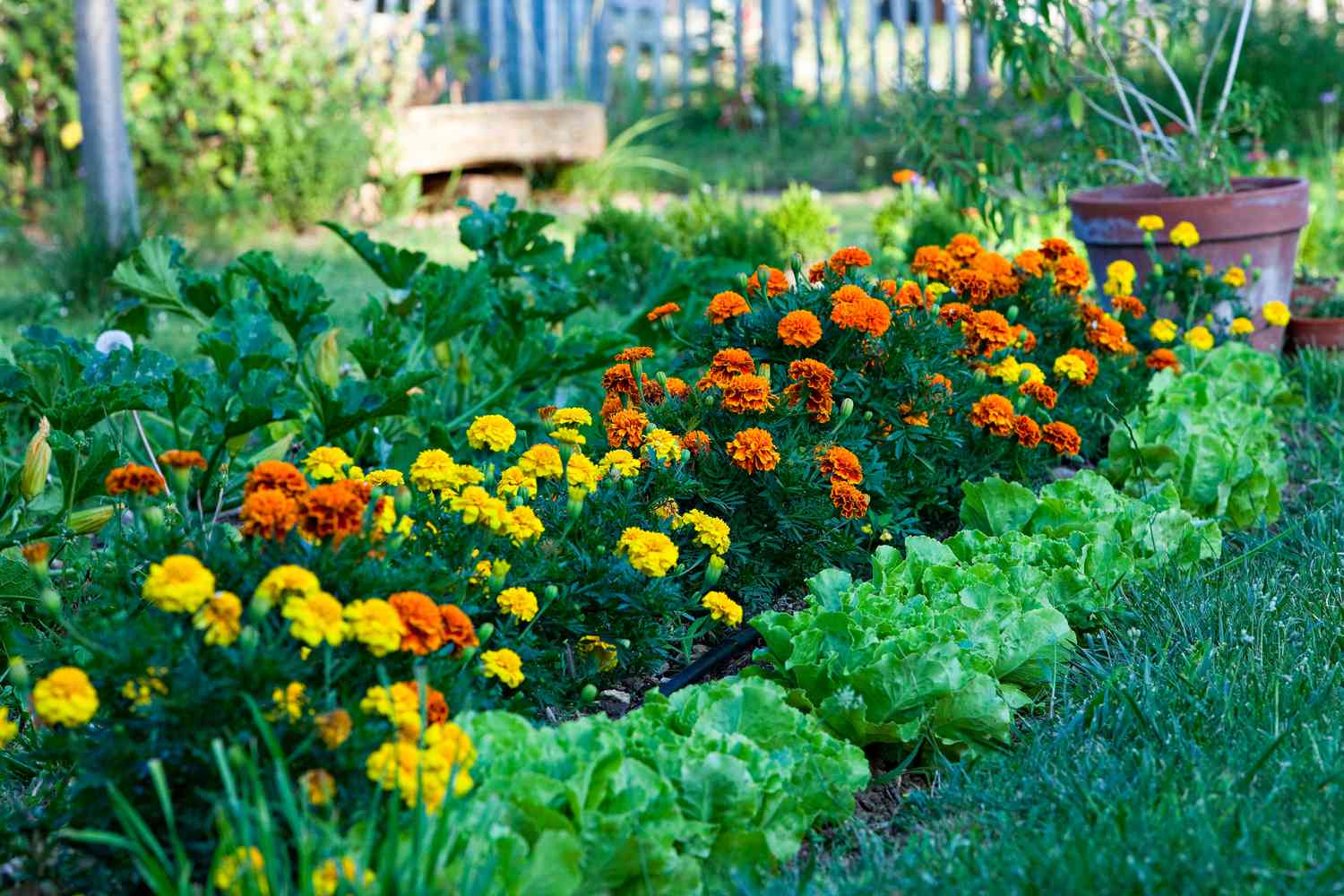
Companion planting is a gardening technique where certain plants are grown together to benefit each other. This method can improve growth, repel pests, and even enhance flavor. But what exactly makes it so effective? Plants interact in ways that can boost their health and productivity. For example, some plants release chemicals that deter pests, while others attract beneficial insects. Companion planting can also help manage soil nutrients, ensuring that plants get what they need without depleting the soil. Curious about how this works? Let's dive into 25 fascinating facts that will help you understand the magic behind companion planting.
What is Companion Planting?
Companion planting is a gardening technique where different plants are grown together to benefit each other. This method can enhance growth, deter pests, and improve soil health. Here are some fascinating facts about companion planting.
-
Mutual Benefits: Plants like beans and corn grow well together. Beans fix nitrogen in the soil, which corn needs, while corn provides support for bean vines.
-
Pest Control: Marigolds release chemicals that repel nematodes, protecting nearby plants from these harmful pests.
-
Attracting Pollinators: Flowers like borage attract bees, which help pollinate nearby plants, increasing fruit and vegetable yields.
-
Improving Soil Health: Legumes, such as peas and beans, add nitrogen to the soil, enriching it for future crops.
-
Shade and Support: Tall plants like sunflowers can provide shade and support for climbing plants like cucumbers.
Historical Roots of Companion Planting
Companion planting has been practiced for centuries. Many ancient civilizations used this technique to improve crop yields and soil fertility.
-
Three Sisters Method: Native Americans used the Three Sisters method, planting corn, beans, and squash together. Corn provides a structure for beans to climb, beans fix nitrogen in the soil, and squash spreads out to suppress weeds.
-
Ancient Chinese Gardens: The Chinese have used companion planting for thousands of years, growing rice and fish together in flooded paddies. Fish waste fertilizes the rice, and rice plants provide habitat for fish.
-
Medieval Europe: In medieval Europe, gardeners planted herbs like rosemary and thyme near vegetables to repel pests and improve flavor.
Modern Applications of Companion Planting
Today, gardeners and farmers continue to use companion planting to improve crop health and yields. Modern research supports many traditional practices.
-
Tomato and Basil: Planting basil near tomatoes can improve tomato flavor and repel pests like aphids and whiteflies.
-
Carrots and Onions: Carrots and onions grow well together because onions repel carrot flies, while carrots deter onion flies.
-
Cabbage and Dill: Dill attracts beneficial insects like ladybugs and parasitic wasps, which prey on cabbage pests.
-
Radishes and Spinach: Radishes grow quickly and can be harvested before spinach needs more space, making efficient use of garden beds.
Companion Planting for Pest Management
One of the main benefits of companion planting is natural pest control. Certain plants can deter harmful insects or attract beneficial ones.
-
Garlic and Roses: Garlic planted near roses can repel aphids, protecting the delicate flowers.
-
Nasturtiums and Cucumbers: Nasturtiums attract aphids away from cucumbers, acting as a trap crop.
-
Chives and Carrots: Chives can repel carrot flies, protecting the roots from damage.
-
Mint and Cabbage: Mint can deter cabbage moths, reducing damage to cabbage leaves.
Enhancing Flavor with Companion Planting
Some companion plants can enhance the flavor of their neighbors, making your harvest even more delicious.
-
Strawberries and Borage: Borage planted near strawberries can improve their flavor and yield.
-
Tomatoes and Garlic: Garlic planted near tomatoes can enhance their flavor and deter pests.
-
Lettuce and Radishes: Radishes can improve the flavor of lettuce when grown together.
Companion Planting for Space Efficiency
Companion planting can help maximize garden space by allowing different plants to share the same area effectively.
-
Corn and Pumpkins: Pumpkins can spread out under corn, using the space efficiently and suppressing weeds.
-
Beans and Beets: Beans can grow vertically while beets grow underground, making efficient use of garden space.
-
Lettuce and Carrots: Lettuce grows quickly and can be harvested before carrots need more room, optimizing bed usage.
Companion Planting for Soil Improvement
Certain plants can improve soil health, making it more fertile for future crops.
-
Clover and Grains: Clover can be planted with grains to fix nitrogen in the soil, improving fertility for future crops.
-
Buckwheat and Vegetables: Buckwheat can be used as a cover crop to improve soil structure and suppress weeds.
-
Alfalfa and Orchards: Alfalfa can be planted in orchards to fix nitrogen and improve soil health, benefiting fruit trees.
The Power of Companion Planting
Companion planting isn't just a gardening trick; it's a game-changer. By pairing plants that benefit each other, you can boost growth, repel pests, and even improve flavor. For instance, planting basil next to tomatoes can enhance their taste and deter harmful insects. Marigolds can keep nematodes away from your veggies, while beans can fix nitrogen in the soil, helping corn and squash thrive.
This method also promotes biodiversity, making your garden more resilient to diseases and pests. Plus, it can save space and reduce the need for chemical fertilizers and pesticides. Whether you're a seasoned gardener or just starting out, companion planting offers a natural, effective way to create a healthier, more productive garden.
Give it a try and see the difference it makes. Your plants will thank you, and you'll enjoy a bountiful, beautiful garden. Happy planting!
Was this page helpful?
Our commitment to delivering trustworthy and engaging content is at the heart of what we do. Each fact on our site is contributed by real users like you, bringing a wealth of diverse insights and information. To ensure the highest standards of accuracy and reliability, our dedicated editors meticulously review each submission. This process guarantees that the facts we share are not only fascinating but also credible. Trust in our commitment to quality and authenticity as you explore and learn with us.


